Where Americans Smoke and Grow Marijuana (Maps)
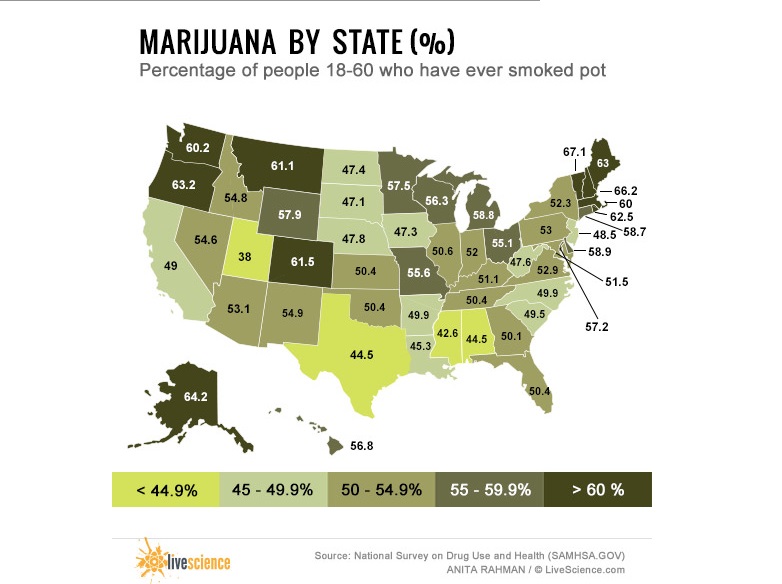
Marijuana's popularity has fluctuated throughout history and across the globe. But in the United States, this drug is becoming ever more mainstream. In two states, recreational use of pot has been legal since 2012, and some type of use of the drug is now allowed in almost half of the country.
Yesterday (Nov. 4) people in Oregon and Alaska voted to legalize recreational pot use, as well as make it legal to set up retail pot shops similar to those operating in Washington and Colorado.
In the District of Columbia, people voted to allow adults 21 and older to possess up to 2 ounces (57 grams) of cannabis, and to grow a limited number of marijuana plants at home, but selling marijuana is still not allowed.
In Florida, although the majority voted in favor of allowing medical use of marijuana, the measure needed 60 percent support in order to pass, and it fell short.
Public opinion regarding marijuana has shifted alongside changes in state legislation. In a 2013 Gallup poll, for the first time, the majority of Americans (58 percent) said the drug should be legal. In that poll, 39 percent said they opposed marijuana legalization, and the other 3 percent said they had not made up their mind.
Meanwhile, the results from drug-use surveys confirm that marijuana is, indeed, the most commonly used drug in the United States, not including tobacco and alcohol. In 2013, an estimated 24.6 million Americans ages 12 and older reported that they recently used an illicit drug, and for 19.8 million of them — or about 7.5 percent of the U.S. population in that age group — that illicit drug was marijuana, according to the Substance Abuse and Mental Health Services Administration (SAMHSA).
In addition to the people who habitually smoke pot, there are many others who have at least tried it. Just over half of Americans report that they have tried pot at least once, according to data collected between 2000 and 2011 in the National Survey on Drug Use and Health (NSDUH), which provides national- and state-level data on the use of tobacco, alcohol and illicit drugs. However, the percentage of people who say they have smoked pot at least once varies among states, ranging from 38 percent in Utah to 67.1 percent in Vermont. Here is a map showing the percentage of people in each state who have ever used marijuana:
Get the world’s most fascinating discoveries delivered straight to your inbox.
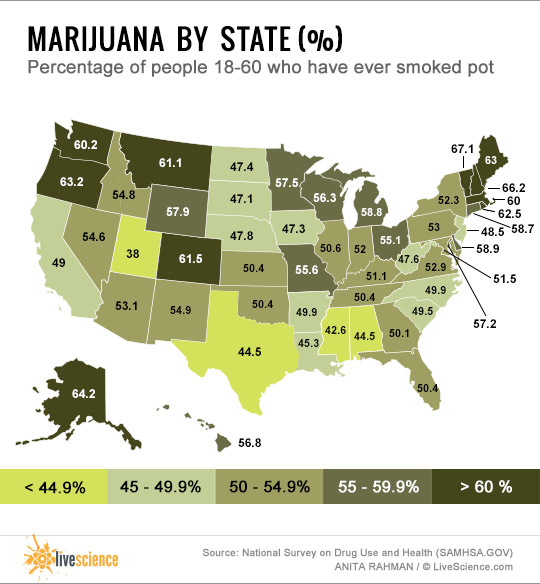
The percentage of people who report using marijuana recently (in the past month) depends heavily on the age group considered. For example, the percentage of people ages 18 to 25 who report having used marijuana in the past month ranges from about 8 to 33 percent, depending on the state, according to data from a 2011 survey. In contrast, pot smoking rates among all people older than 26 are lower, and range from 2.5 to 9.5 percent across the states. Here are the percentages of people ages 18 to 25 in each state who used marijuana in the past month (the states are divided into five groups, with 10 states falling into each group):
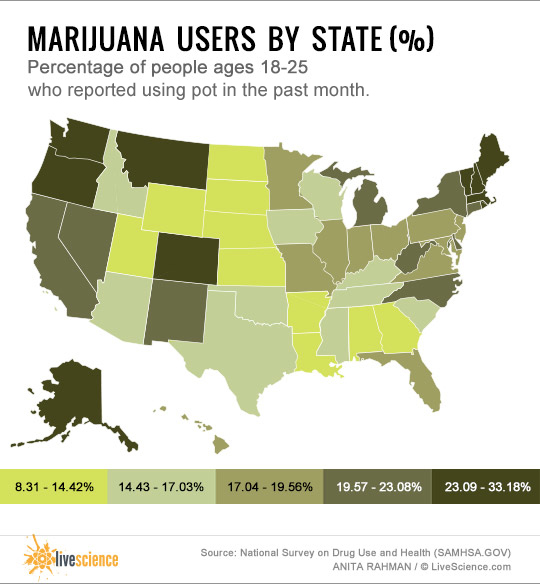
Colorado and Washington, two states that legalized marijuana in 2012, were perhaps unsurprisingly among the states that had the highest pot smoking rates in 2010 and 2011. Alaska, Oregon and the District of Columbia — where residents voted yesterday about whether to legalize the drug — were also in the group of states with the highest percentages of users in the most recent survey. Floridians also voted on allowing marijuana for medical use; Florida fell into the group with the second-highest use. [11 Odd Facts About Marijuana]
Below is a map of how state laws regarding marijuana would look like after the new votes take effect. In states where marijuana is legalized, people ages 21 and older can use the drug for recreational and medical reasons. In states where it is decriminalized, people won't face criminal penalties for possessing limited amounts of the drug for personal use, although they may have to pay fines. States with medical marijuana laws allow the drug to be used only for medical purposes, for which people would need a prescription.
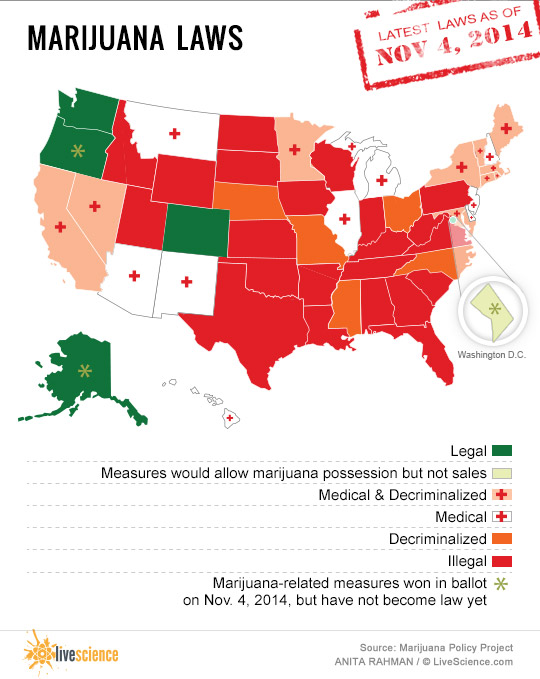
In Alaska, marijuana was decriminalized more than 40 years ago, and since 1998, it has been legalized for medical use there. However, state laws still stipulated that marijuana is illegal outside of people's homes, making it difficult for those with a marijuana prescription to acquire the medicine.
In terms of how people get their hands on marijuana, national-level data show that 54.8 percent said they get it for free by sharing it with someone, 42.9 said they buy it, 1.3 percent trade something for it and 1 percent grow it themselves.
Alaska ranked the highest in this last category, with 4.1 percent of users saying they grow their own pot.
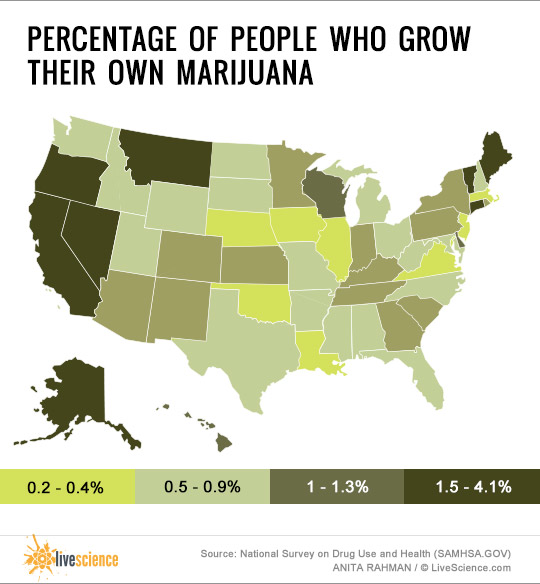
LiveScience's Karen Rowan contributed reporting to this article.
Editor's note: This article was originally published on Nov. 4 before three states and the District of Columbia voted on marijuana-related measures. The article was updated throughout, on Nov. 5, to reflect the results of the vote.
Email Bahar Gholipour. Follow Live Science @livescience, Facebook & Google+. Originally published on Live Science.

